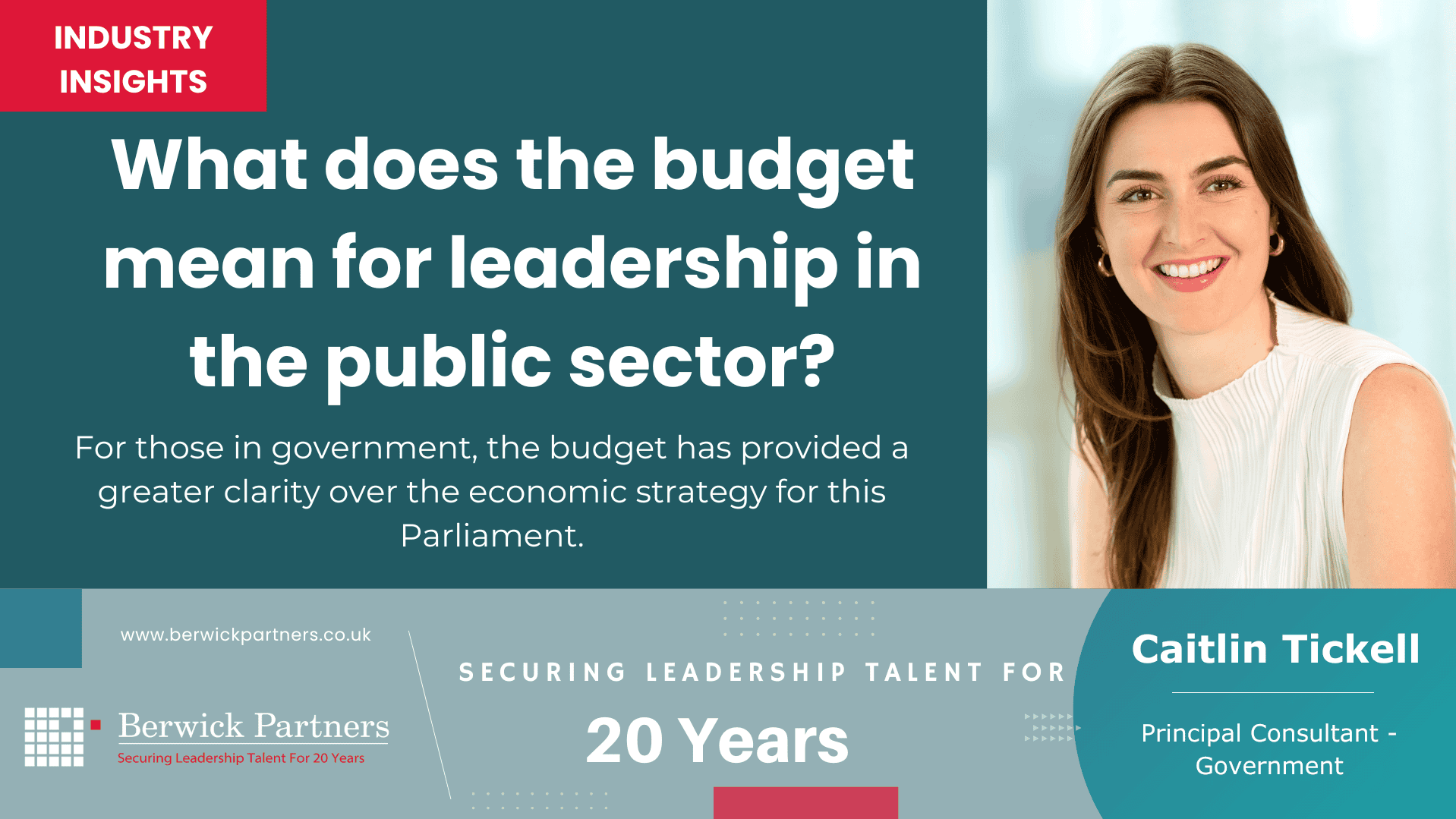What does the budget mean for leadership in the public sector?
Autumn’s budget brought some importance insights and implications for leaders across the civil service. For those in government, the budget has provided a greater clarity over the economic strategy for this Parliament. Leaders now have a more stable foundation for planning, particularly with the introduction of budget balance rules that will apply by the third year of the forecast, rather than the fifth. This change is clearly aimed at bringing immediate accountability and transparency, allowing public sector leaders to prepare for longer-term spending adjustments.
Key Investment Areas
What was clear is that this Labour government are approaching growth from the perspective of investment rather than a primary focus on growing the labour market. For Departments, there have been announcements of some significant spending increases, both for capital expenditure and day-to-day spending. Education and health were clearly front and centre in the announcements although the Ministry of Justice has also seen a large increase in spending, albeit from a smaller base initially. Defence spending is also to rise by £2.9 billion next year, whilst the Home Office Budget will shrink by 3.1% 2024-25, and 3.3% in 2025-26. These changes will require strategic adaptability, especially for those departments facing reductions. The importance of agility and financial foresight will be crucial as leaders seek to align their departmental priorities with broader government objectives.
This is particularly relevant for those tasked with advancing cross-departmental ‘mission boards’ that have been designed to foster collaboration on complex issues, such as those at the intersections of health, education, and economic growth. How exactly departments choose to spend their allocations will show more clearly in the coming months. There is some positivity across government regarding the multi-year spending review, enabling public bodies to plan for longer-term investment with a greater degree of certainty, and the spending review will be a point in time where we will see greater clarity on the priorities and missions. The mission boards ought to be supportive of increased inter-departmental collaboration in order to tackle ‘wicked’ policy problems such as the determinants of health or how transport investment can unlock the skills agenda and regional economic growth.
Regional Devolution
Devolution remains high on the agenda, with Greater Manchester and the West Midlands receiving increased funding flexibility from next year – a model expected to extend to other mayors by 2026-27. The upcoming white paper on devolution will be an interesting read, although those in the local government space are striking a balance in their response – welcoming a 3.2% increase in real terms core spending power whilst still noting that they are 7% worse off in real terms since 2010. Again, navigating these financial pressures will demand a pragmatic approach as leaders balance the need for fiscal responsibility with the push to deliver meaningful outcomes in their regions.
Creation of New Entities
The Office for Value for Money and the National Infrastructure and Service Transformation Authority are two interesting changes in the Whitehall fabric. The OVM will sit within HM Treasury and work with Departments through the spending review, whilst NISTA draws two existing bodies (the National Infrastructure Commission and the Infrastructure and Products Agency) into a single entity which will be operational by next spring in order to lead on the delivery of a ten-year national infrastructure strategy. For leaders, this presents an opportunity to engage with these bodies to maximize resources and ensure departmental investments align with the national infrastructure strategy.
Finally, with future Spring Statements set to evaluate spending rules against a broader set of economic indicators—a recommendation previously advocated by the Institute for Government—senior public sector leaders will need to be vigilant, prepared to adapt strategies in line with these evolving fiscal benchmarks. As head hunters, our role in supporting the public sector extends beyond recruitment to advising on strategic alignment and leadership development to navigate these changes. This evolving fiscal landscape demands a dynamic, results-oriented leadership approach, one that we are committed to fostering and familiar with identifying.
This article was brought to you by Caitlin Tickell. Caitlin is a Principal Consultant in our Central Government Practice. For more information about the work we do in the Practice, please contact Caitlin.






